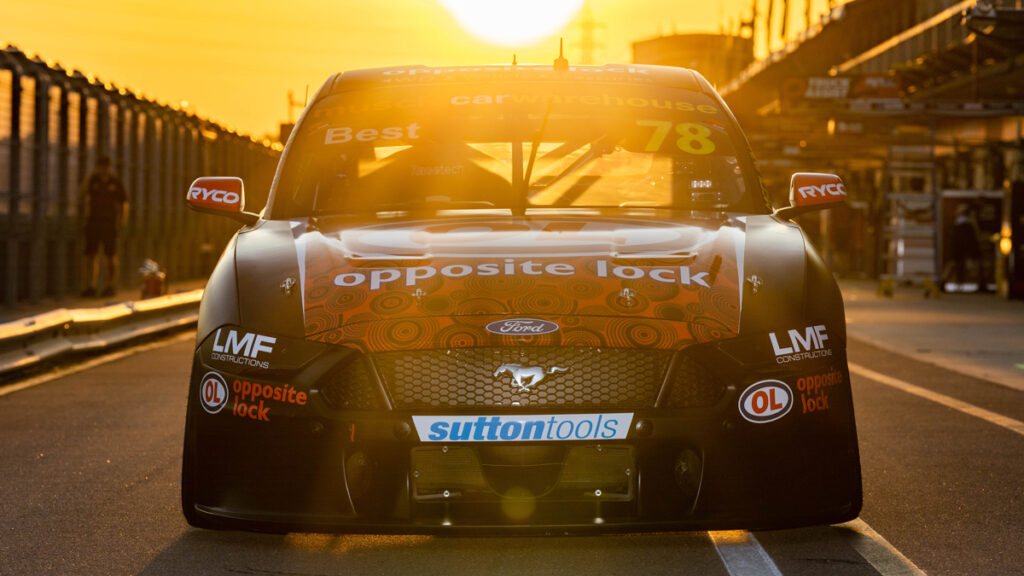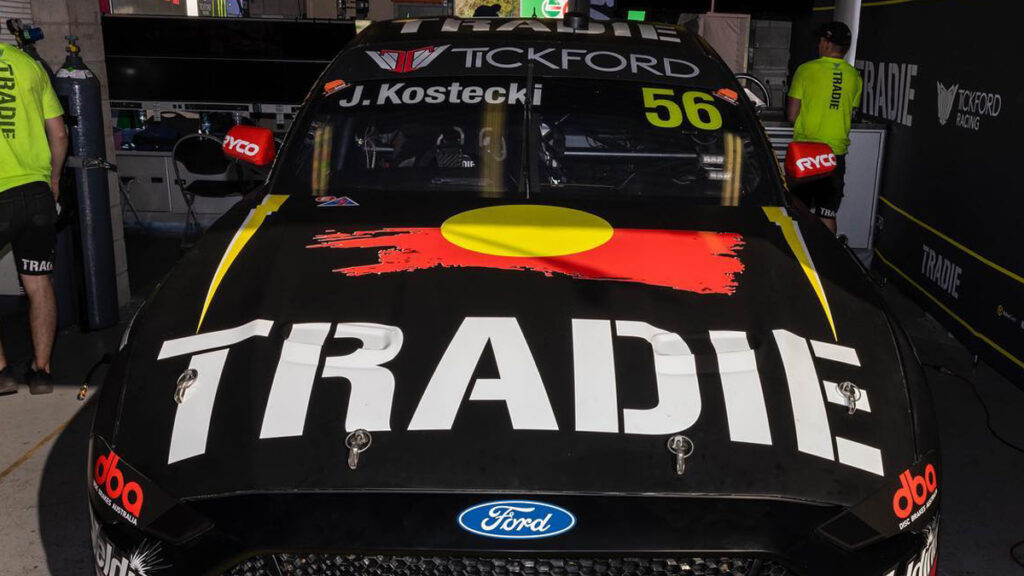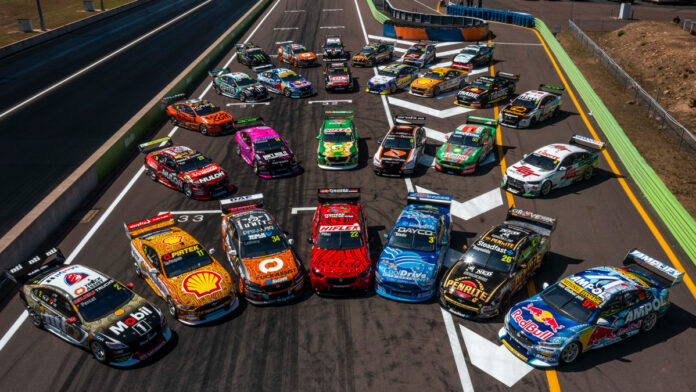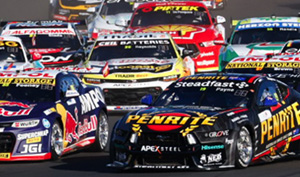THE 2022 Darwin Triple Crown at Hidden Valley marks the first official Indigenous Round in Repco Supercars Championship history.
Supercars has followed the lead of the AFL and NRL football codes in theming a weekend of its competition around celebrating indigenous culture.
Indigenous-themed liveries have been made compulsory for the event, with teams encouraged to collaborate with indigenous artists on their designs.
This page is your one-stop destination for every Indigenous Round livery, updated as each is unveiled in the lead-up to the June 17-19 event.
#2 Nick Percat / #25 Chaz Mostert, Walkinshaw Andretti United
Artist: Brian ‘Deadly’ DeVries, a proud Wiradjuri Gunya man with ties to the Yuin Nation.
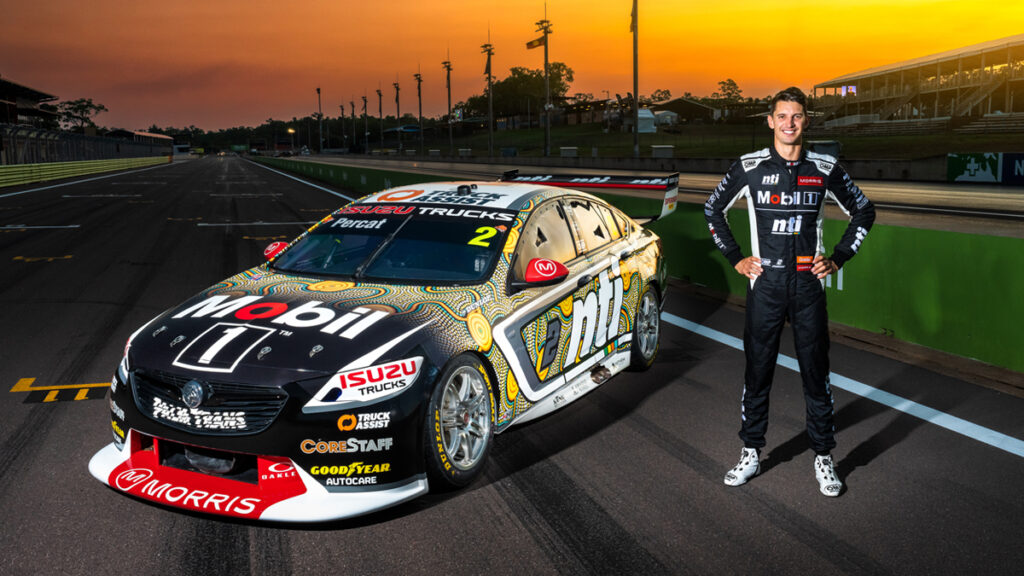
The team says: The design seen on the Mobil 1 Optus Racing No. 25 and Mobil 1 NTI Racing No. 2, which was originally created to honour of the collaboration between Optus and KARI Foundation, is titled ‘Community Togetherness.’
It captures the journeys of travel coming together, the meeting places, the ripples of communication and the knowledge that is shared and is always plentiful.
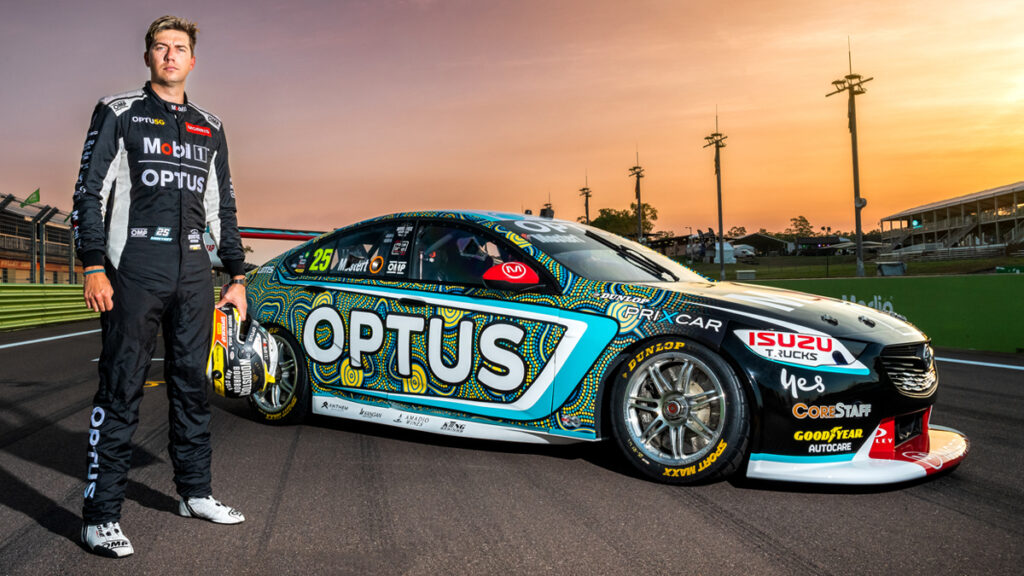
#3 Tim Slade, Blanchard Racing Team
Artist: Melissa Tipo/Yaram, whose family have lived in the Darwin and Litchfield areas for generations.
Tipo/Yaram is an Academic Coordinator for the Young Indigenous Women’s STEM Academy, which delivers a CSIRO program for women seeking opportunities in a STEM career.
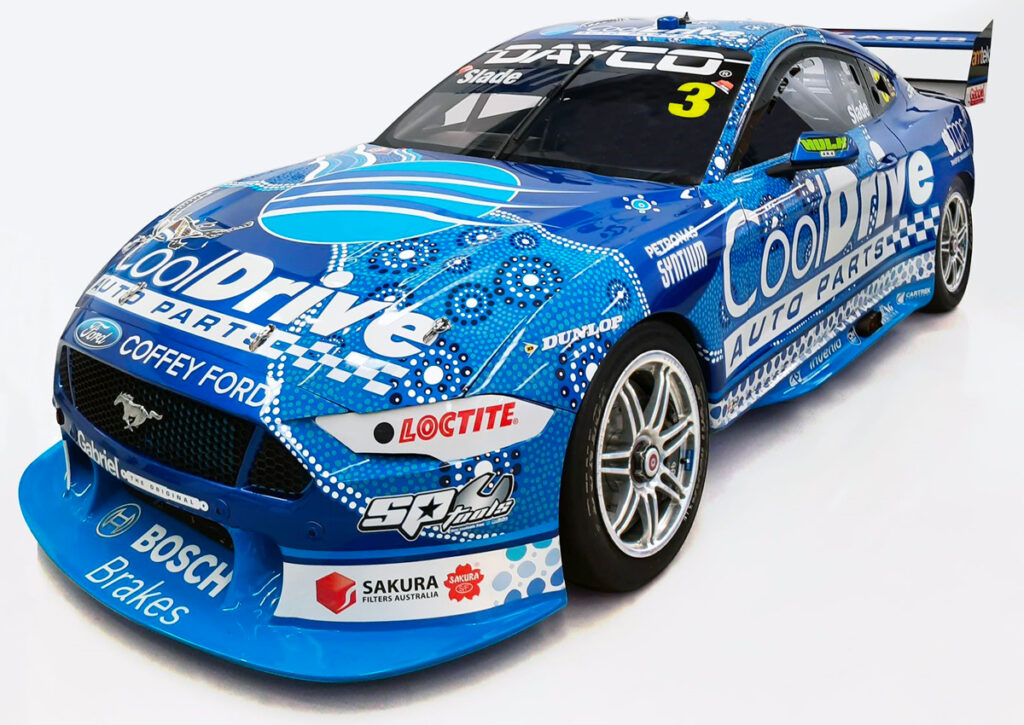
The team says: At the heart of the design is the Saltwater Crocodile, which represents strength, power and masculinity.
Balancing out the Crocodile, the water lilies represent fertility, the blue signifies water, and the dots around the motifs symbolise prior generations, who are still overseeing and guiding society.
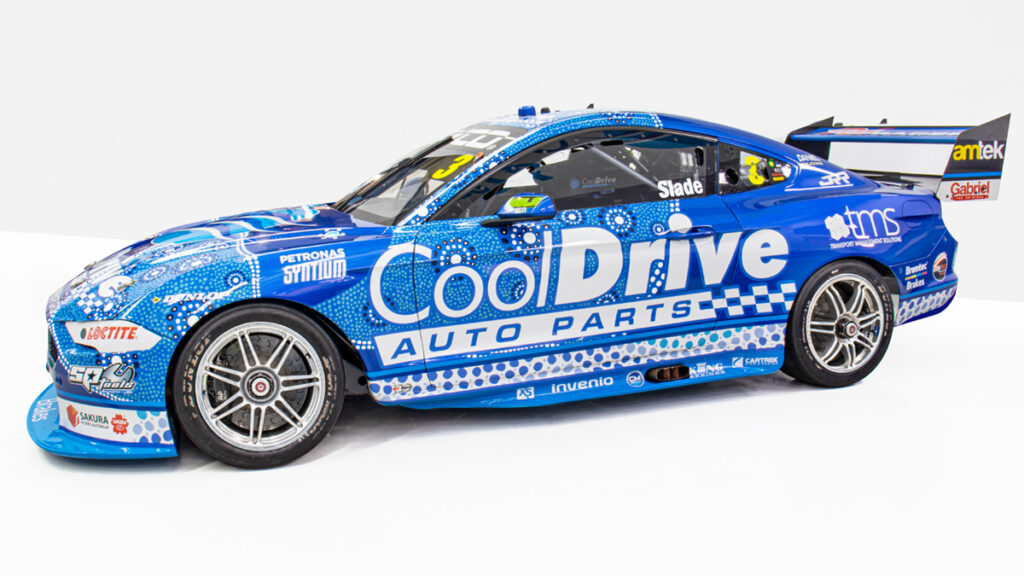
Another important facet is the bonnet painting, which covers various topics. The top left represents the Larrakia Country (Darwin area), with the flowing water surrounding the community, otherwise known as the “Saltwater People”.
At the bottom right is the team, their families and the community supporting the outfit, while the star at the top right represents “Grandpa”, ensuring that John Blanchard Senior is remembered at the track.
#4 Jack Smith, Brad Jones Racing
Artist: Elenore Binge, a Goomeroi/Kamilaroi woman born in Goondiwindi who was inspired to paint by her great Aunt Colleen McGrady.
This livery was adapted from the original work Younger, commissioned by Australian Rail Track Corporation in 2021 as part of their Reconciliation Action Plan.
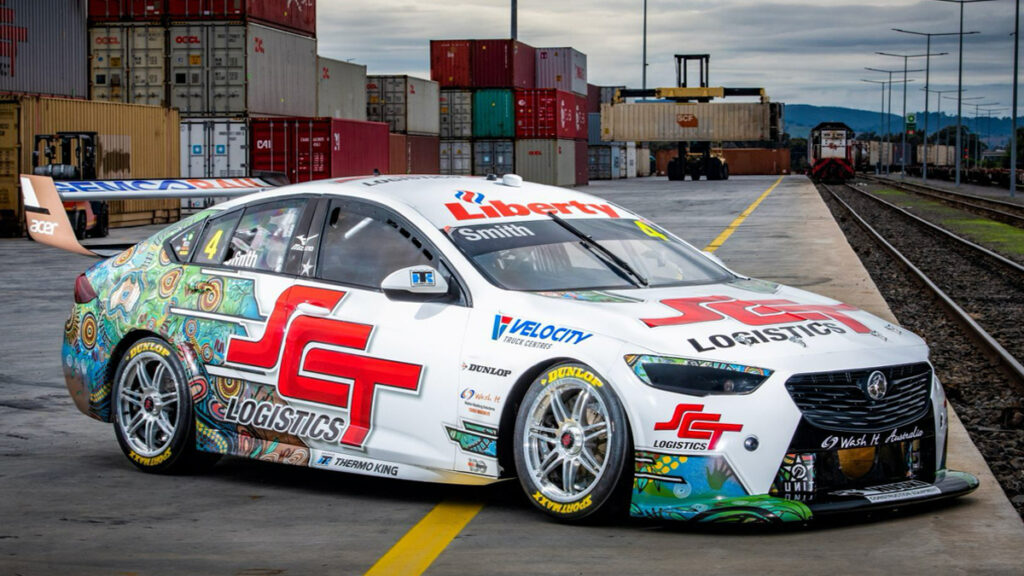
The artist says: Younger depicts Mother Earth, the land we call Australia, and the waterways are her veins. Our Ancestors have walked this Country since time began.
The Traditional Custodians of each Nation are our Spirit Guides, and they are there to protect our Lands and to make the reconciliation journey a safe one.
The Traditional bush medicines acknowledge healing and moving forward with shared learning of the reconciliation journey. The black and white hands symbolise reconciliation.
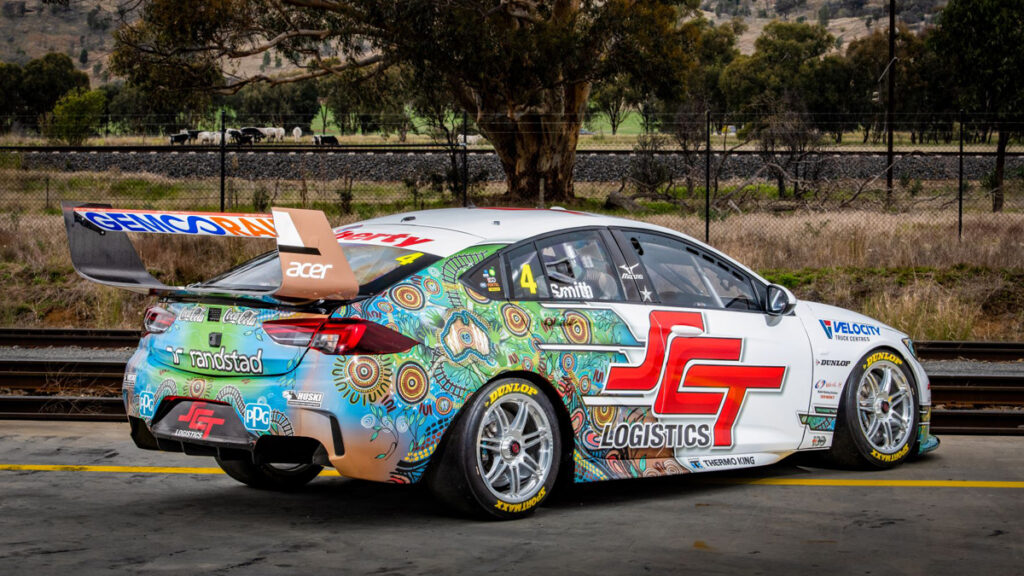
Railway tracks are depicted throughout, and the blue lines are Mother Earth’s veins, representing our rivers and waterways.
The No Harm and Meeting Place symbols and the Five Spirit Guides of the five states that we operate on and through are surrounded by the white footprints of the Ancestors gone before us, surrounded by Sacred Sites that may be on Country.
#8 Andre Heimgartner, Brad Jones Racing
Artist: Jedess Hudson, a young emerging Indigenous Artist from Cairns in Far North Queensland and a descendant of the Ewamian and Western Yalanji people.
The artwork on this livery has been designed to tie-in with the products made by sponsor R&J Batteries.
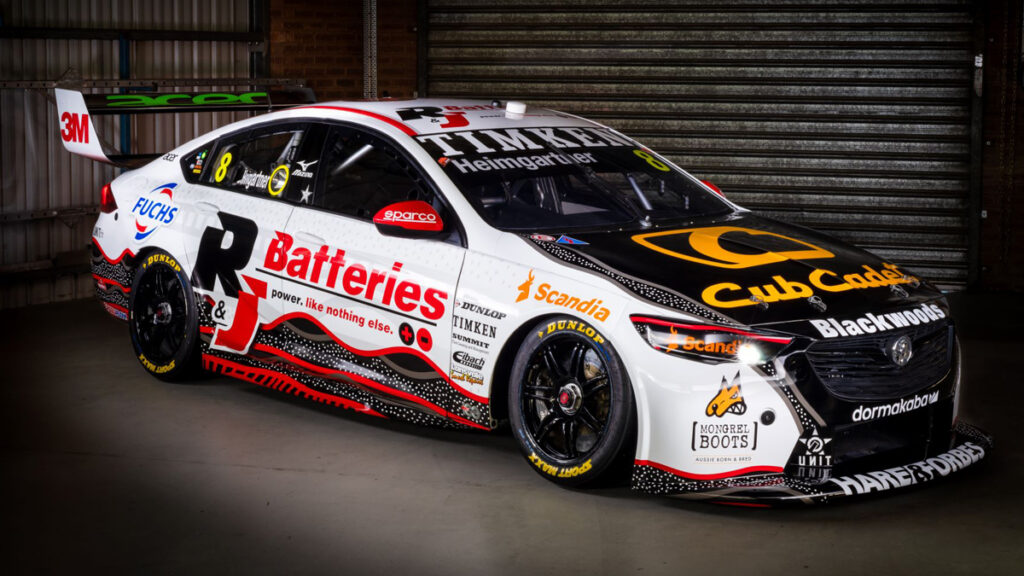
The artist says: The Undara Lava Tubes are situated on Ewamian country, which contain the remains of the Earth’s longest flow of lava originating from a single volcano.
Volcanic activity formed these tubes over 190,000 years ago. The red and orange represents the journey lines as the lava travels and flows across the land.
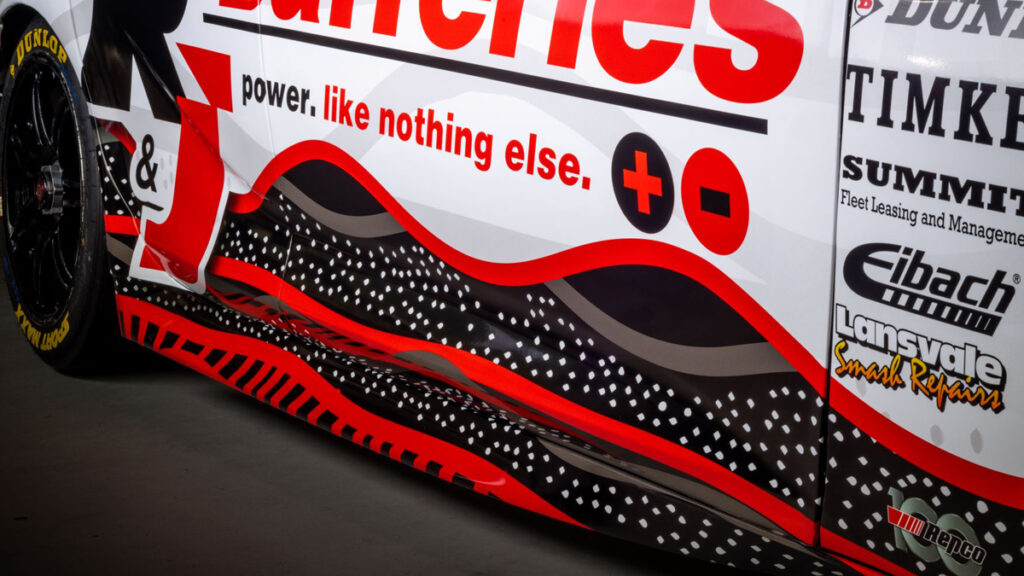
Each lava tube varies in length, size, and dimension with its own unique story.
The dots embody the lava imprint within the tubes and the Lava flow contain powerful energy – the natural embodiment of the products that R&J Batteries are known for today.
#9 Will Brown / #99 Brodie Kostecki, Erebus Motorsport
Artist: Dale Austin, whose artwork is influenced by his culture of West Arnhem and Kakadu.
This design features male and female Mimih spirits, which to the Bininj people, were original spirit beings who taught people how to survive in the bush.
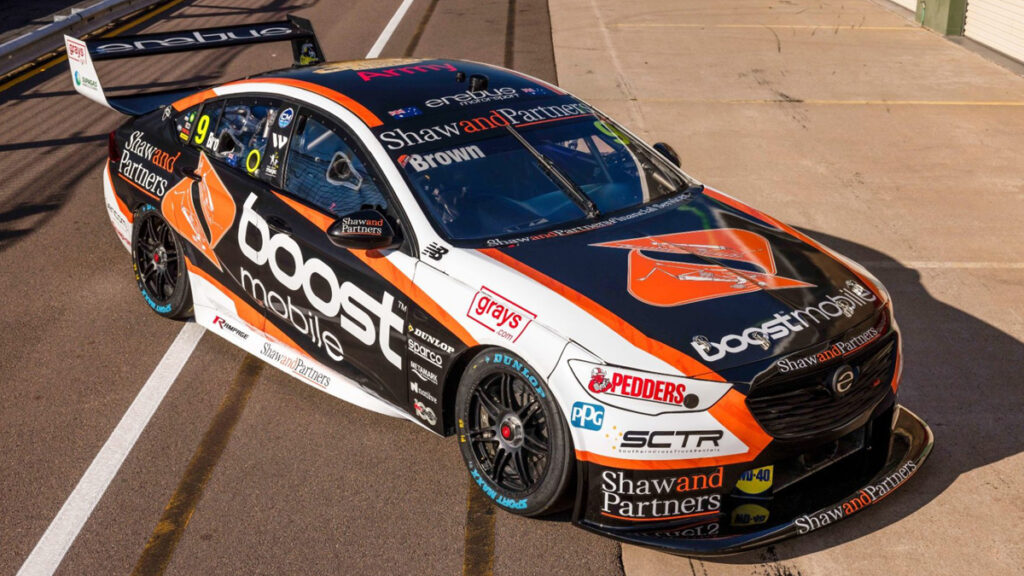
Erebus, in conjunction with title partner Boost Mobile, also announced a donation $10,000 to the Starlight Foundation’s Healthier Futures Initiative.
The artist says: Our style of art is always very well known as one of the most continuous styles that has gone fairly unchanged.
There is always a male and female side to learning and teaching within our culture and the Mimih spirits represent the combining of that knowledge.
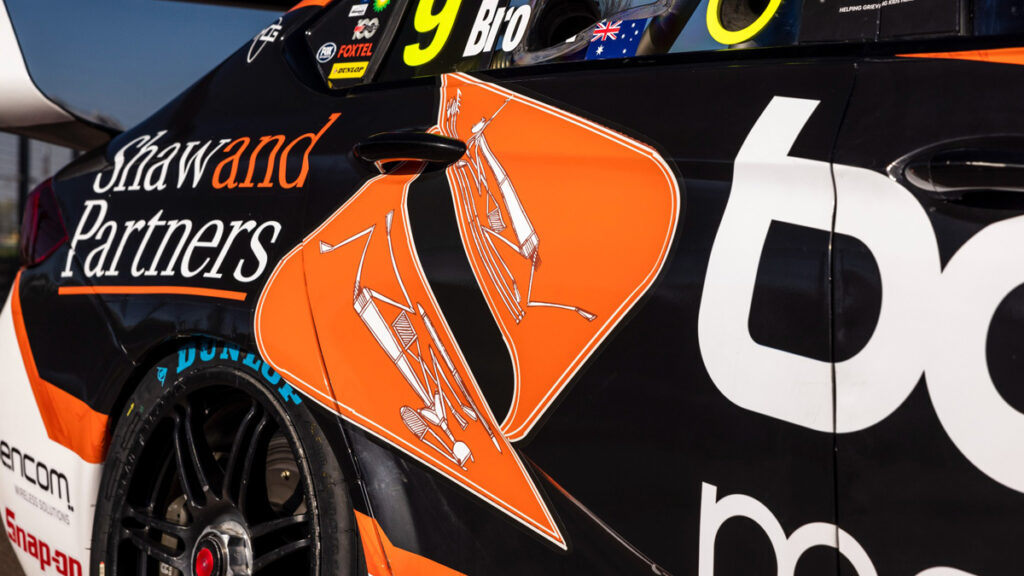
People say that the Mimihs were spirit beings but they’re actually the ancestral spirits of all the previous people that passed on that knowledge.
By displaying our culture on these vehicles, it lets people know that we’re still here and we’re still strong even after the atrocities of the past and the hurdles we still face today.
It’s a great way to showcase the past, the present and the future.
#10 Lee Holdsworth/#26 David Reynolds, Grove Racing
Artist: Lorraine Kabbindi White, a Darwin born Indigenous artist and Melbourne Indigenous Transition School Boarding House Manager.
Elements of this livery are used across both the Penrite Racing Supercars and the Penrite Honda Racing Superbike team, which will also be in action at Hidden Valley.
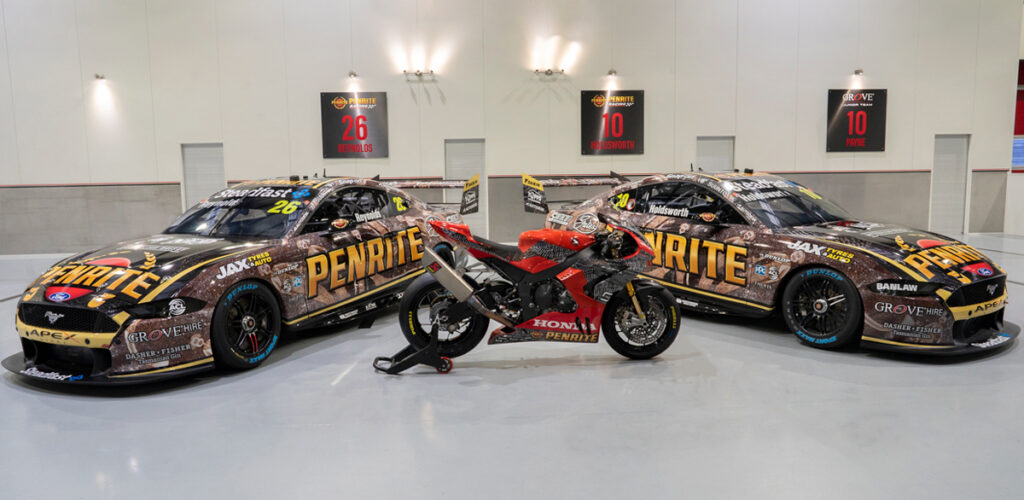
The team says: The story depicted within the livery is based on ‘The First Bees’ and the ‘Freshwater Mermaids’ artworks created by Kabbindi.
The three different colours each represent the bees. Kubbulak, Kardderre and Nabiwu. Kubbulak belongs to the mardku moiety, and Kardderre and Nabiwu belong to Ngarradjku moiety. The artwork captures their first flight out of their human bodies.
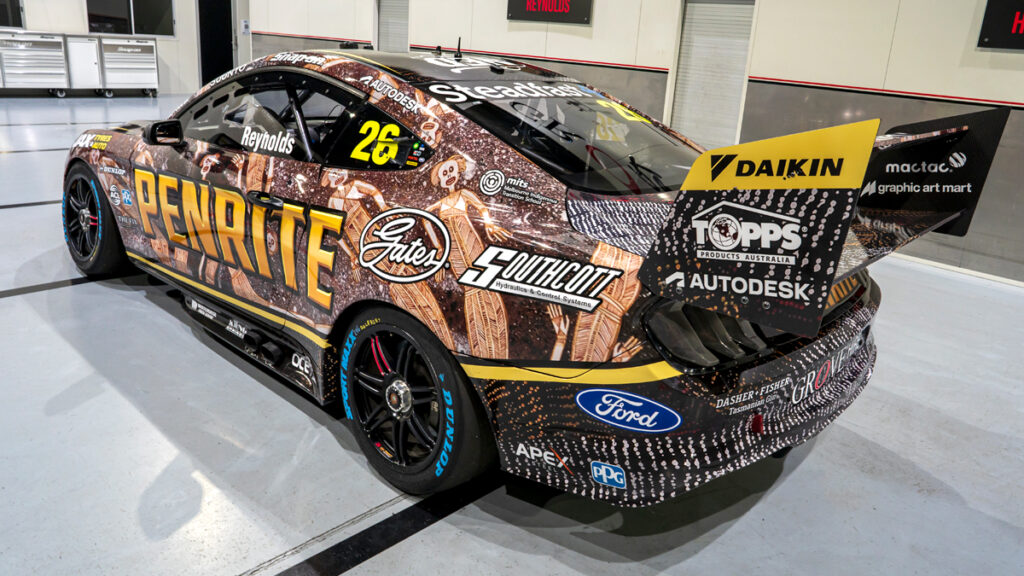
To make her two separate artworks come to life across both our Supercars and Australian Superbike complex body panels the team utilised the talents of Peter Hughes and Tim Pattinson.
Kabbindi used natural pigments all sourced from her family’s Mok Clan – Ankung Djang (Sugar bag dreaming) estate on the upper Liverpool River, Arnhem Land, NT.
#11 Anton De Pasquale / #17 Will Davison, Dick Johnson Racing
Artist: DJR partnered with Bayila Creative for its livery, which will run on the two Mustangs in both Darwin and Townsville.
Lead artist, Dixon Patten (Bitja), is a proud Yorta Yorta, Gunnai, Gunditjmara, Yuin, Jaithmathang, and Wiradjuri man.
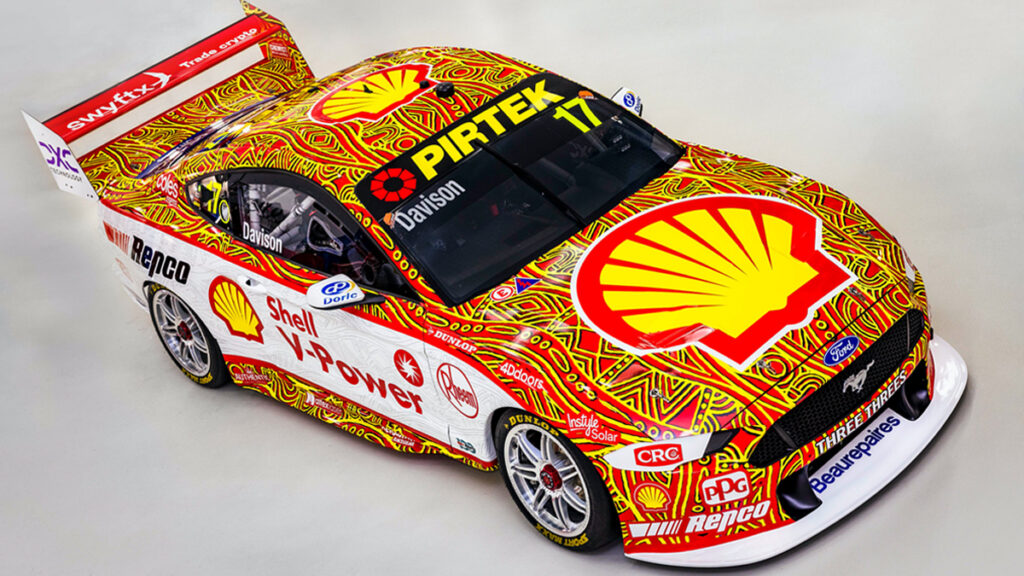
The team says: The livery is dedicated to the ancient culture of Australian First Nations communities and celebrates the honour of the Elders on a world stage.
The U shape symbols represent the old people gathering to eat, connect, and reflect, leaving traces of midden shells. These sites connect and represents our place in history.
The ripples show how everything influences everything else – all the intersections of life. We are all noteworthy to the fabric of time and space, every single thing is connected from a macro and micro level.
The assorted markings and patterns depict the diversity of cultures and honours their cultural lore.
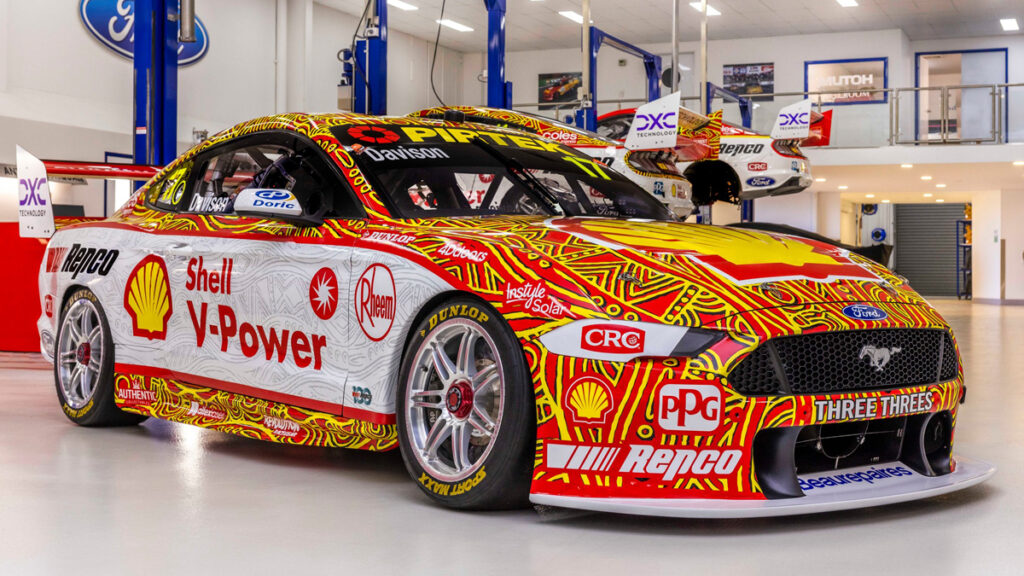
Our Countries: which include land, water, sky and animals are our biggest teachers, they told us what we needed to know about how to survive and thrive; by observing the seasons and cycles of life, meant we knew how to live sustainably and harmoniously.
The gum leaves represent our human family tree, we are all custodians of mother earth, and it is our collective duty to Care for Country. This can only be done through authentic connection, intentional communication and understanding.
The dots and elliptical patterns show the transference of knowledge from one generation to the next; we obtain our wisdom through deep listening and retain it with an open mind and heart.
#14 Bryce Fullwood, Brad Jones Racing
Artist: Jedess Hudson, a young emerging Indigenous Artist from Cairns in Far North Queensland and a descendant of the Ewamian and Western Yalanji people.
Jedess took inspiration from sponsor Middy’s Electrical when she created the artwork titled Light the Way.
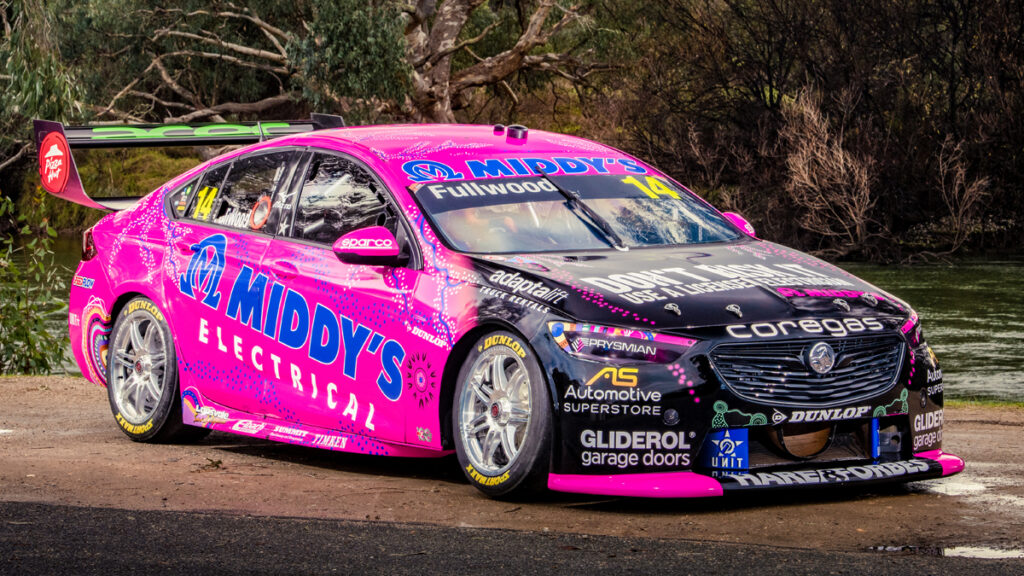
The artist says: Across our land, we see various weather patterns that signal the changing of seasons, mainly through the hot and humid summer months.
Bryce was born and raised in Darwin and Northern Australia which is known for its distinct wet and dry seasons and various types of lightning that can occur. Dry lightning, lightning to fire, and lightning to storms.
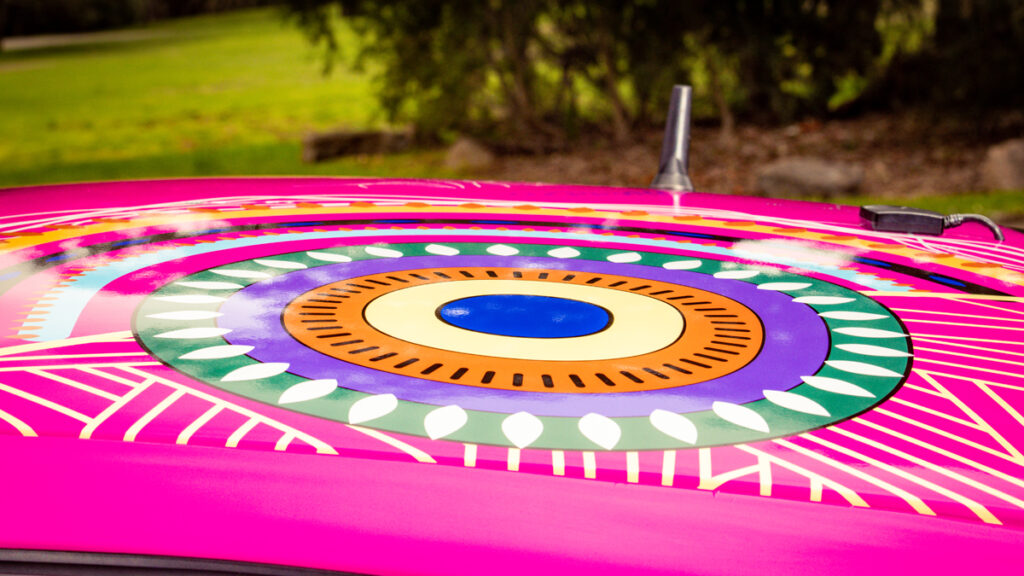
“For First People, we recognise the original form of energy transference was lightning and with Middy’s being such a beacon in the Australian electrical industry, it seemed the perfect juxtaposition of elements to inspire the design.”
#18 Mark Winterbottom, Team 18
Artist: Chern’ee Sutton, a proud Kalkadoon woman and Aboriginal artist from Mount Isa, Queensland, who is a renowned contemporary First Nations artist.
This livery features Sutton’s artwork within the regular IRWIN Racing livery. It will be used for both the Indigenous Round in Darwin and the following Townsville 500.
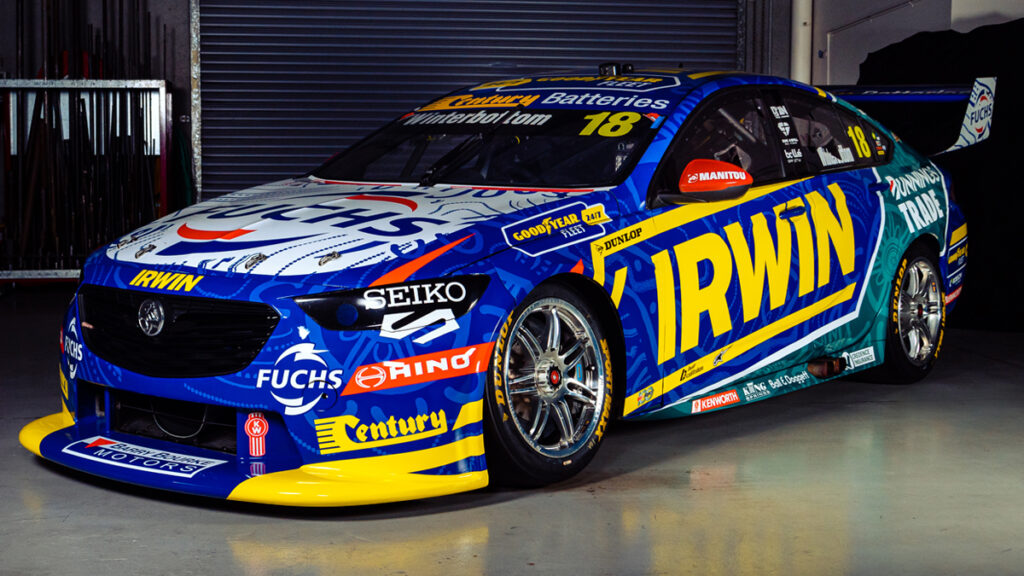
The team says: The large community symbol in the centre of the painting represents the first Indigenous round of the Supercars, with the centre of the community symbol in the shape of a Supercars wheel.
The U symbols and people around the community symbol represent the many men, women and children who will attend next week’s event.
The smaller community symbols which are connected to the larger community symbol through travelling lines represent all of the spectators and supporters who will travel from all around Australia to watch the event, from the dessert and the outback, represented through the mountains in the bottom left, to the rainforests and the bush represented through the leaves and flowers in the top left, to the coastlines and waterways, represented by the waterholes in the bottom right, while the dots which surround these community symbols represent the supporters who will be watching the event from home.
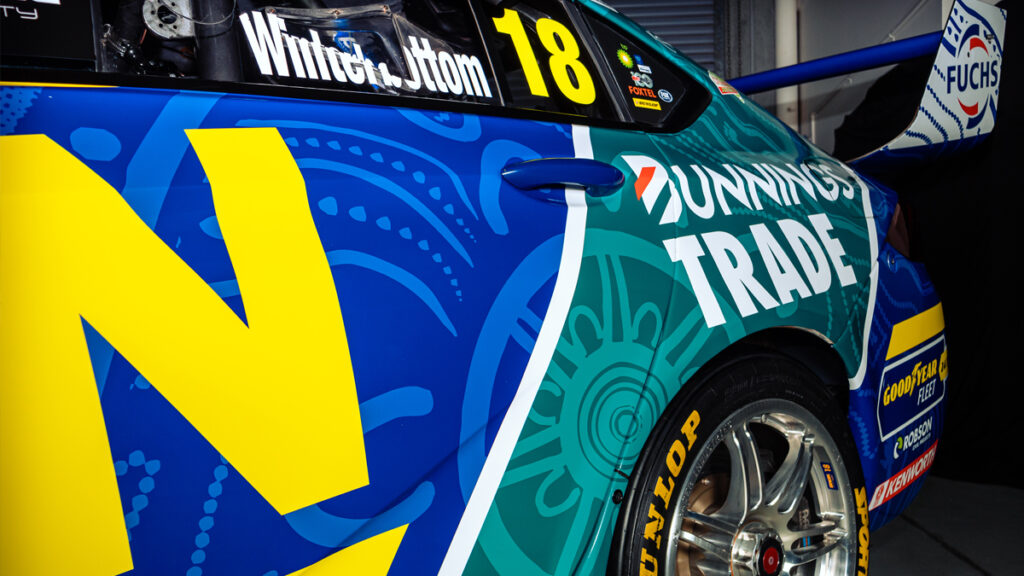
The footprints leading to the large community symbol represent the drivers and their teams travelling to the event in Darwin, while the rainbow serpent represents Aboriginal and Torres Strait Islander culture and history which has been a part of Australia for the last 65,000 years as well as paying homage to the traditional custodians of the Darwin area, the Larakia people.
The Kangaroo and emu footprints represent how the IRWIN Racing team are always moving forwards and never backwards, just like the kangaroo and the emu.
#20 Scott Pye, Team 18
Artist: This livery has been designed in collaboration with naming rights partner Nulon and GH United, a Mackay-based Memorial Rugby League team.
The artwork was created by Mackay-based Indigenous artist, Debbie Thaiday of DT Trait Designz and her family, who are from Iama & Erub Islands in the Torres Straits.
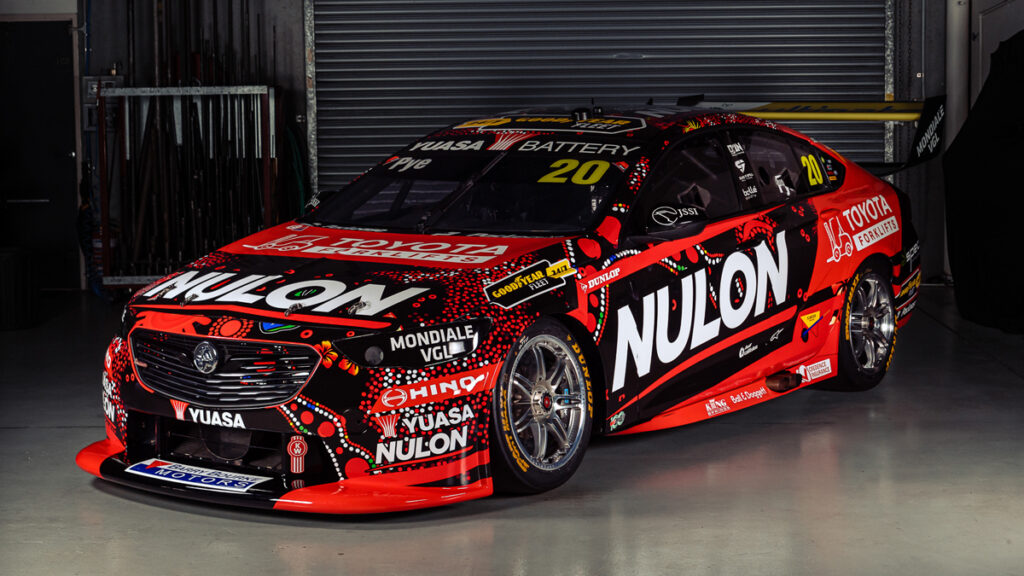
The team says: The artwork portrayed in the livery pays homage to two Mackay women, Gail Hine and Grace Hoffman, who both passed away from a Brain Aneurysm in 2009.
Hine and Hoffman originated from the Torres Strait Islands and the main features of the design reflect their Torres Strait heritage.
The day of the Nulon Racing indigenous livery reveal also coincides with what would have been Grace Hoffman’s 60th birthday.
The story of the design is based on raising awareness for Brain Aneurysms, with the main feature on the roof featuring a butterfly, which represents Hine, and the larger turtle which represents Hoffman.
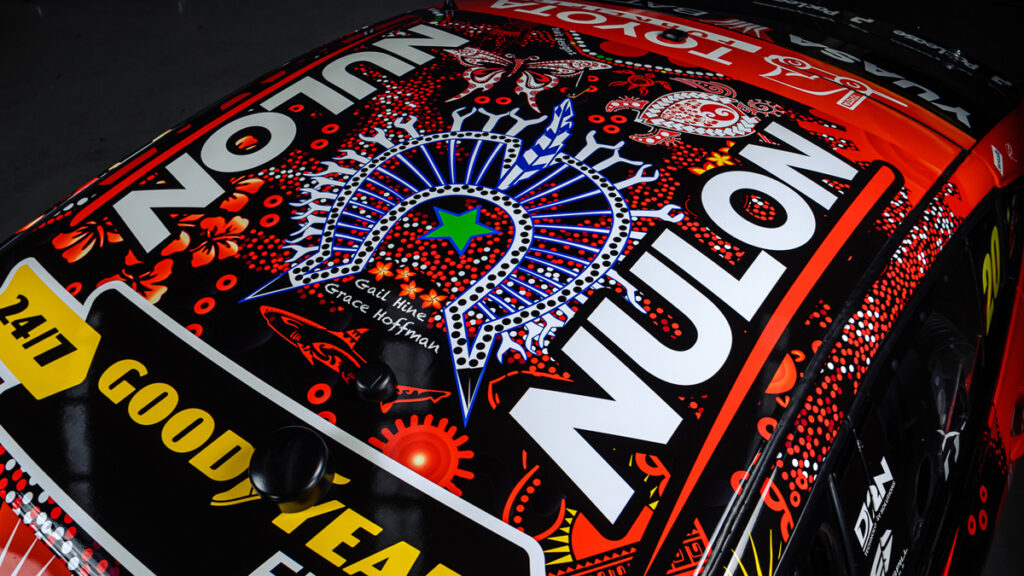
The dots running through the artwork represent Brain Aneurysm, with the burgundy colour incorporated into the dots as the colour for Brain Aneurysm Awareness.
The design also features a totem for each woman in the form of a Torres Strait Island Pigeon and Crocodile.
The black tip reef shark and crocodile are the totems of the family of Debbie Thaiday, while the four yellow frangipani flowers represent the four children of both Grace and Gail.
The rest of the artwork features significant Torres Strait Islander drawings including the Dhari (traditional Island headdress), Warup (Island Drum), Lumut (drum), Gor (used for traditional dancing), the turtle and dugong which are a part of the Torres Strait Islander food source, and a traditional island dancer.
#22 Chris Pither, PremiAir Racing
Artist: Kiewa Tya Austin-Rioli, a 21-year-old Gunditjmara and Tiwi Islander woman who owns and runs the Sweet Water Art design studio.
The car has adopted Coca Cola No Sugar branding for the Indigenous Round.
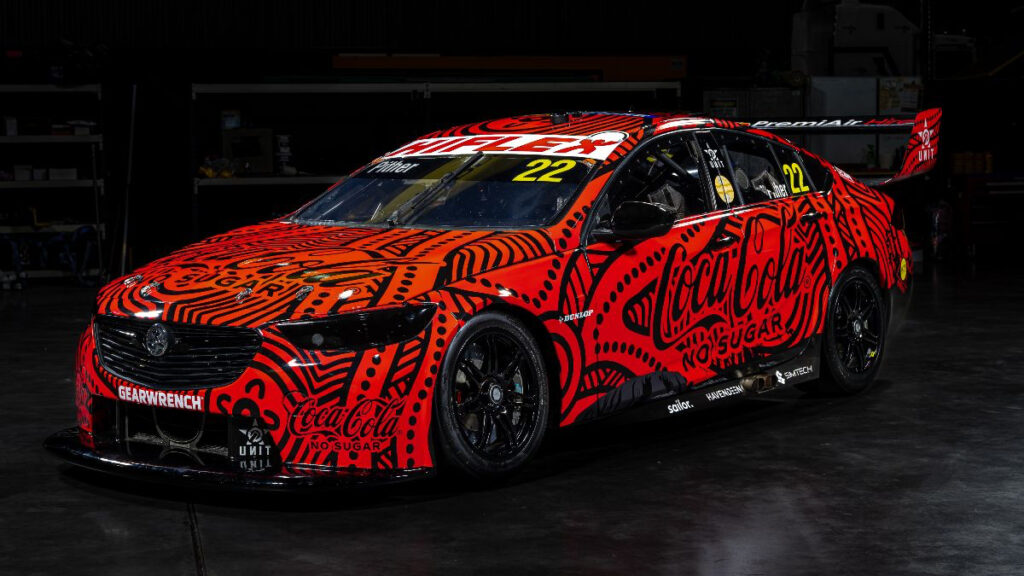
The artist says: With this artwork, I wanted to represent the unity of our people, so the artwork shows the connections that Aboriginal people have with each other all over Australia.
There are connections with family, cultural ways and through the land and songlines. This piece also shows the strength of those connections with all of our people.
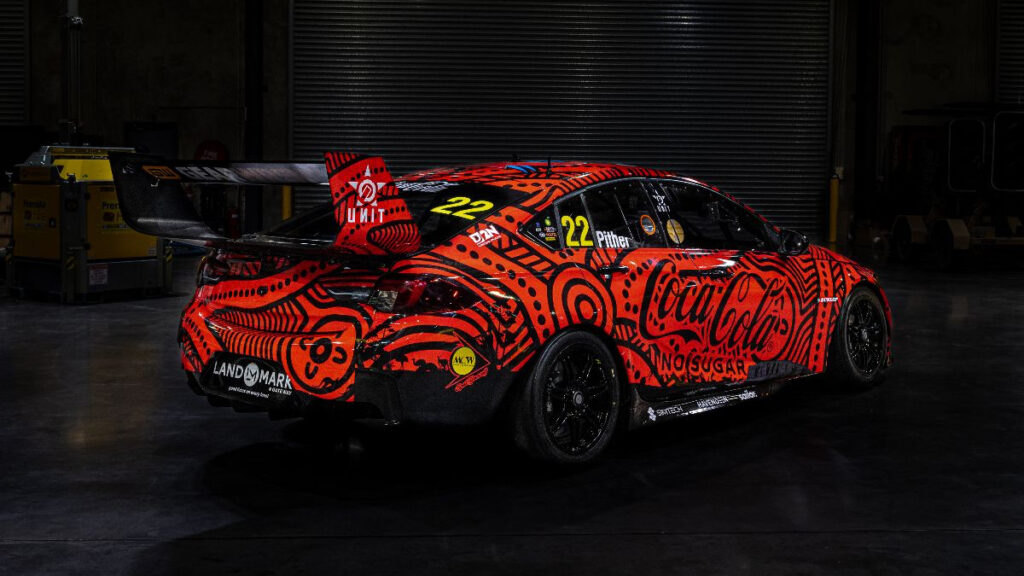
#27 Jayden Ojeda, Walkinshaw Andretti United
Artist: Rhonda Sampson, a proud Kamilaroi woman who lives on Dharawal country in South Western Sydney.
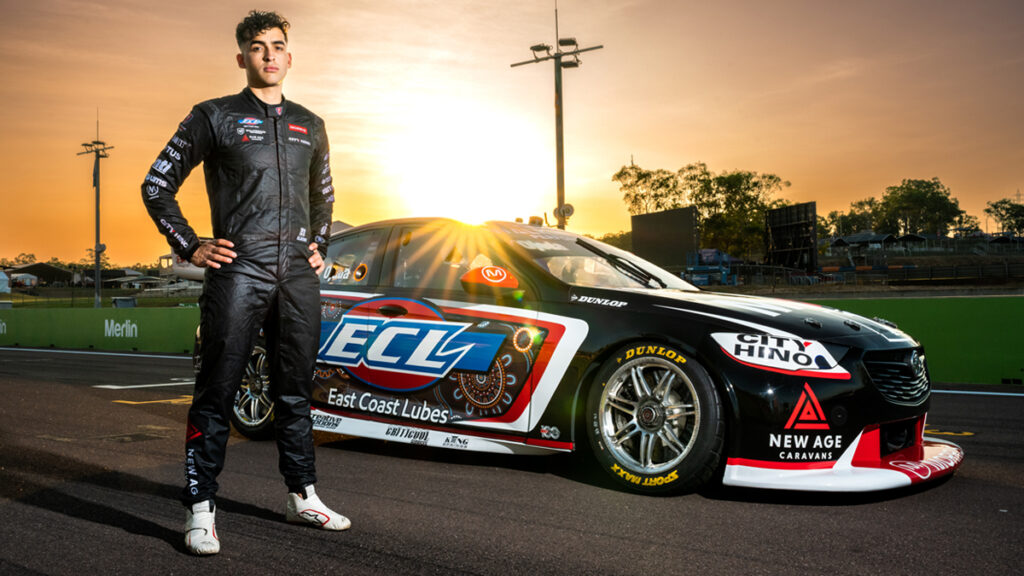
The team says: The artwork, ‘Community, Culture and Connection’, is a visual representation of the KARI Foundation and all their partners commitment to showcase Aboriginal excellence through the shared vision, mission, and values of the KARI Foundation.
#34 Jack Le Brocq / #35 Todd Hazelwood, Matt Stone Racing
Artist: Trent Bundirrik Lee, a local Larrakia artist.
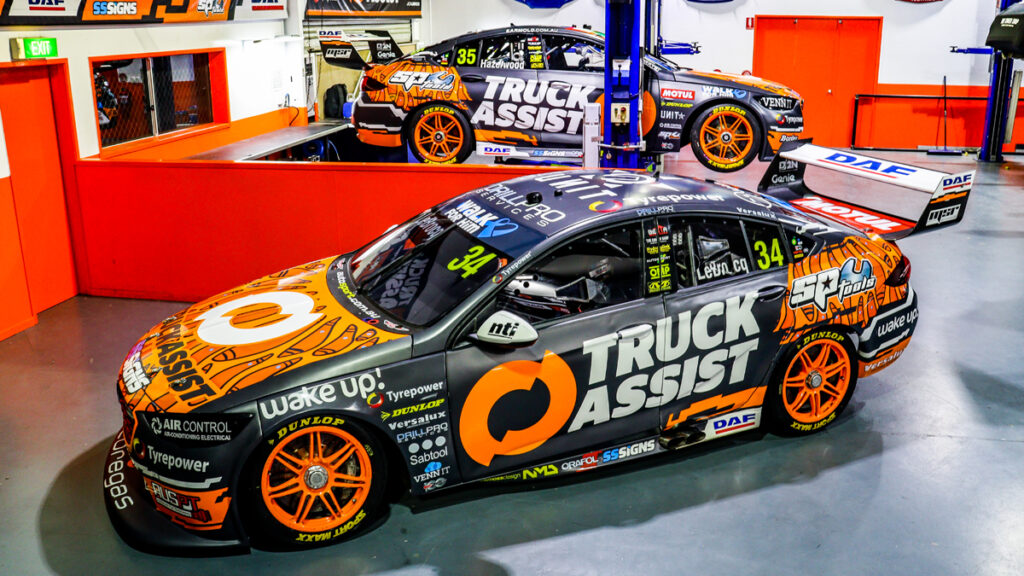
The team says: (The artwork) shares the story of the Kapok tree which signs a change in season.
The design features a pod casing opening with a white cotton like material that surrounds the seeds. This is replicated with the pod like shapes and a blue dot which symbolises the fluffy material.
For the traditional owners of the Darwin region and Larrakia land, this is an important time of year as the flower on the tree is eatable and the tree itself also has many uses for their people.
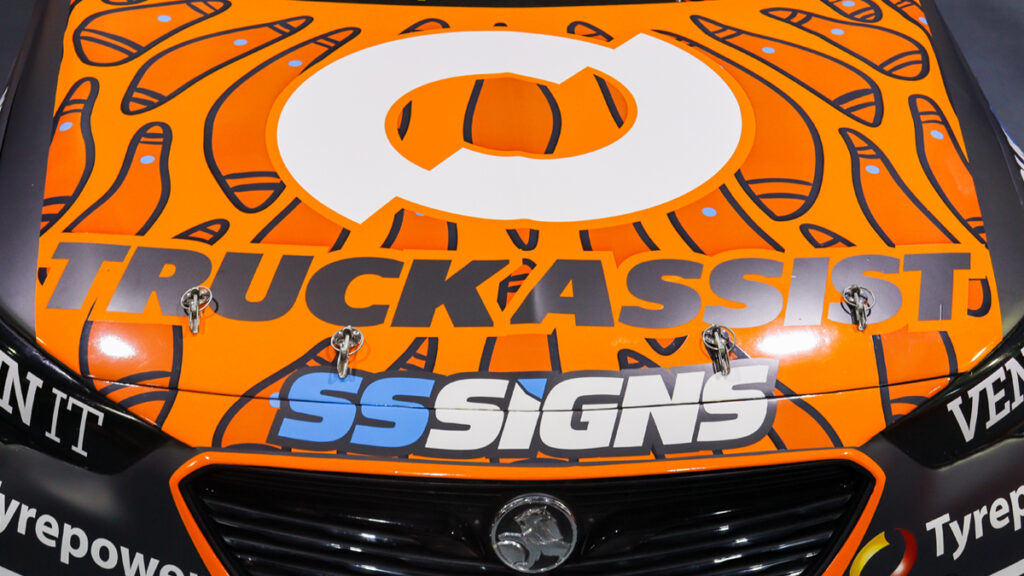
#55 Thomas Randle, Tickford Racing
Artist: Les ‘Lipwurrunga’ Huddleston, an internationally acclaimed artist of the Roper River region of Arnhem Land and a descendant of the Ngundi people.
The artwork features on the bonnet of Randle’s Castrol Mustang and the BP-sponsored Ford Mustang Safety Car.
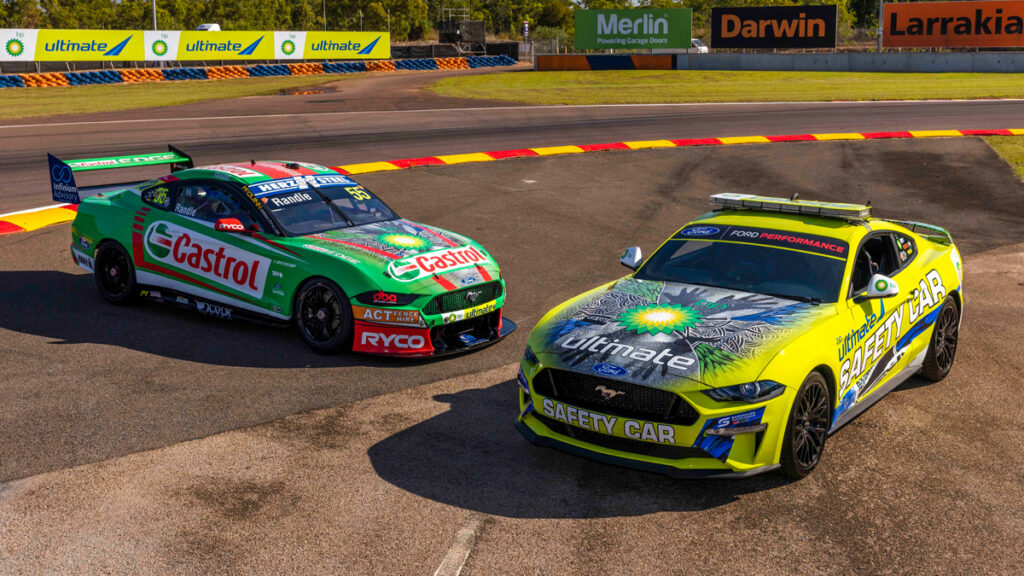
Supercars says: The painting features fish and a billabong which symbolises an important Top End life source.
A central circle represents the special place where people meet, and Huddleston’s personal lines depict the energy and power from the vehicles and racetrack.
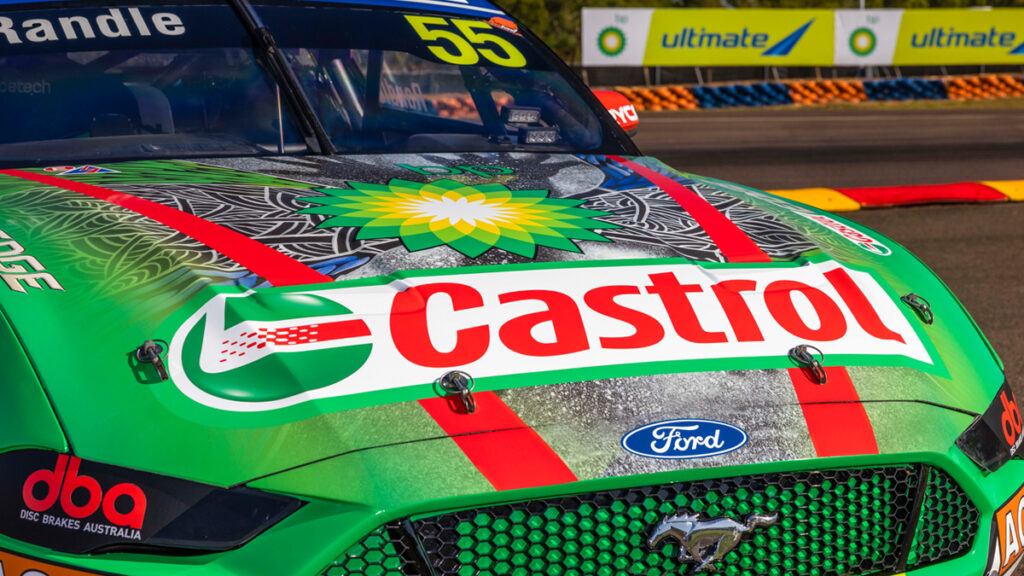
#76 Garry Jacobson, PremiAir Racing
Artist: Elaine Chambers-Hegarty of Cultural Edge Designs, an award-winning Aboriginal Graphic Designer and Artist with cultural links to the Koa (Guwa), Kuku Yalanji and Barada Barna people.
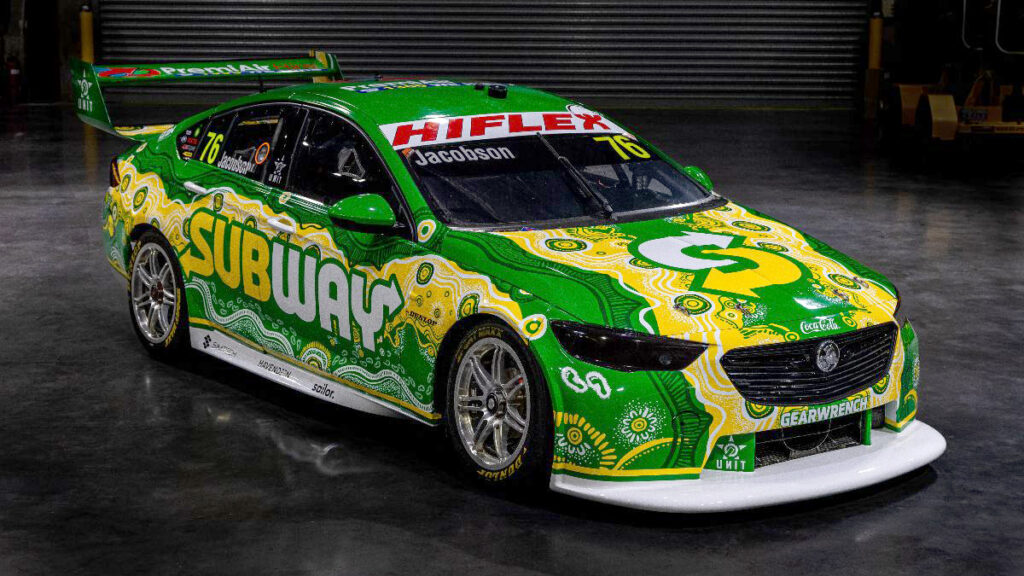
The team says: “Making Tracks” highlights the connections of past, present and future through the representation of the journey pathways.
The pathways throughout the artwork highlight the continuous growth of people as individuals as well as a collective community.
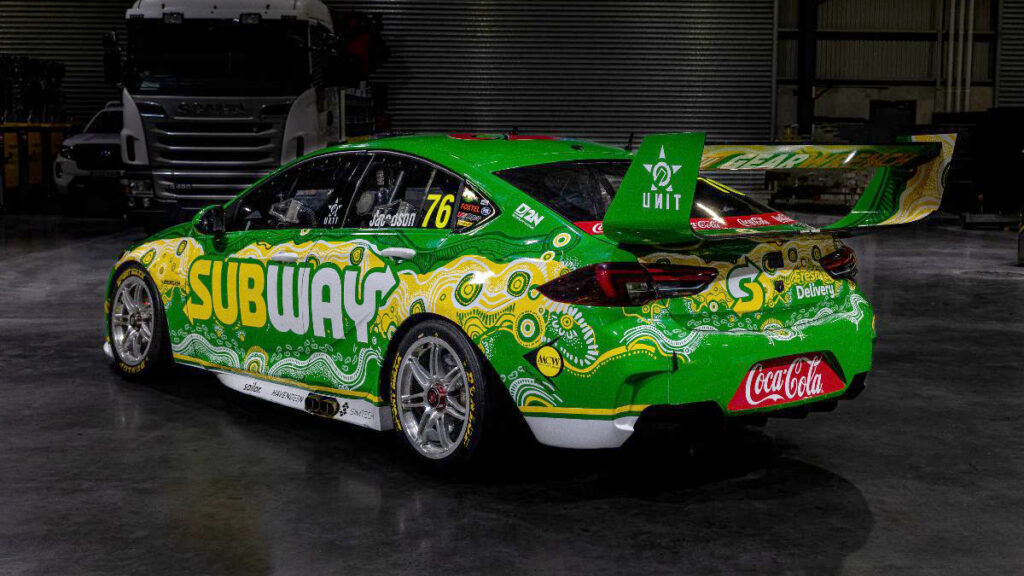
The large circular pathway in the artwork represents the race track itself – as you travel around the racetrack, you are in a process of continuous improvement, growth and development.
#88 Broc Feeney / #97 Shane van Gisbergen, Triple Eight
Artist: This livery has been designed by students of the Hunter River Clontarf Academy in Heatherbrae, New South Wales.
It celebrates Ampol’s longstanding partnership with the Clontarf Foundation and the recent release of its Innovate Reconciliation Action Plan.
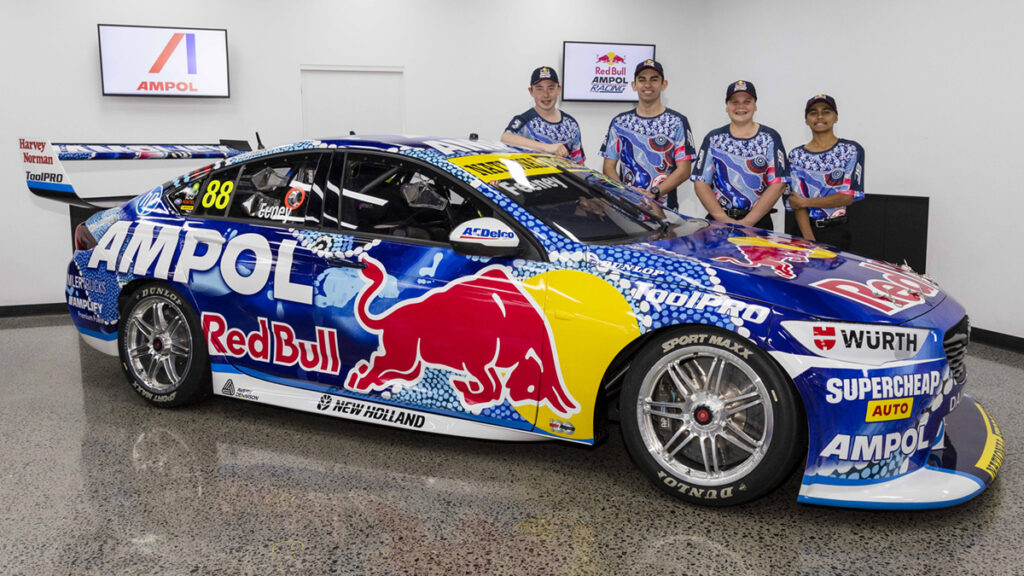
The Clontarf Foundation operates to improve the education, life skills, self-esteem and employment prospects of young Aboriginal and Torres Strait Islander men through academies in schools across Australia, including their program at Hunter River High School.
The team says: The artwork tells the story of the Hunter River Clontarf Academy, showing where the Hunter River meets the harbour and the connection that local Aboriginal people have to the water.
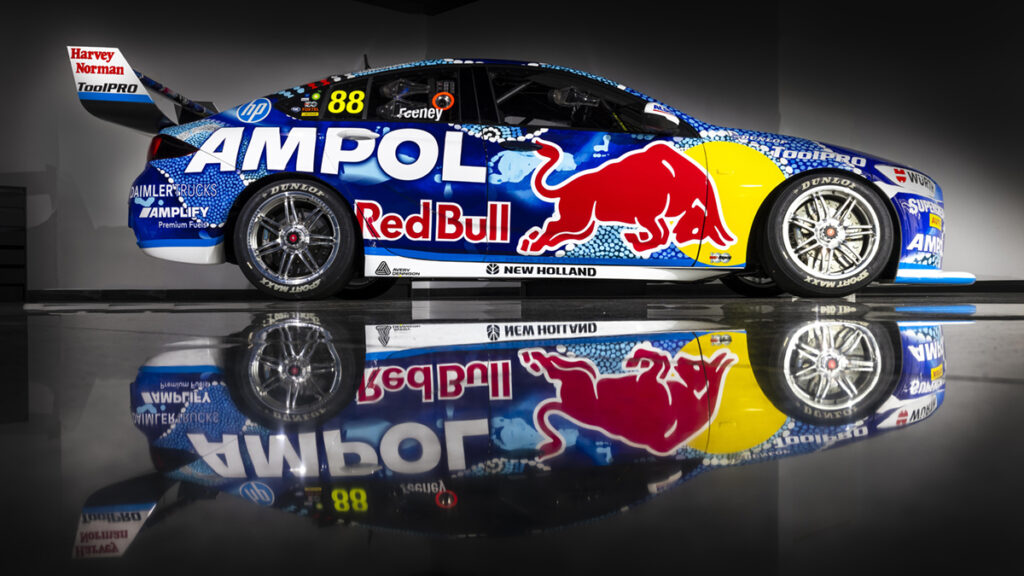
There are footprints along the river which grow from small to large and illustrate the journey of leadership and growth that Clontarf students embark upon on while at school. The circles of dots throughout the artwork represent the local communities that the academy connects with.
The ‘blue sunrise’ represents new beginnings and how the hunter river students strive to become the best versions of themselves and learn from others.
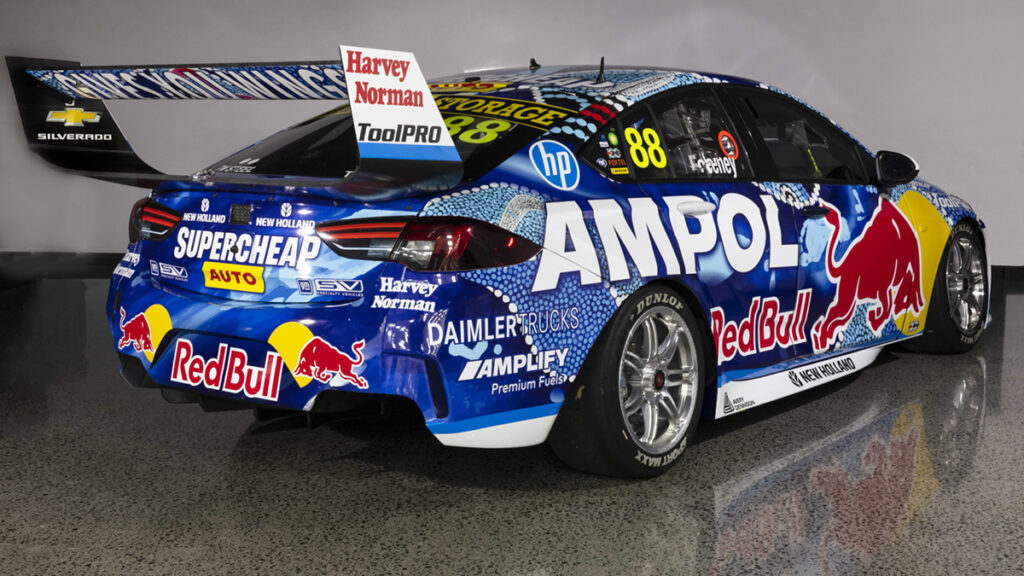
#96 Macauley Jones, Brad Jones Racing
Artist: Jedess Hudson, a young emerging Indigenous Artist from Cairns in Far North Queensland and a descendant of the Ewamian and Western Yalanji people.
This livery has been designed to tie-in with new sponsor Kubota, which produces agricultural and construction machinery.
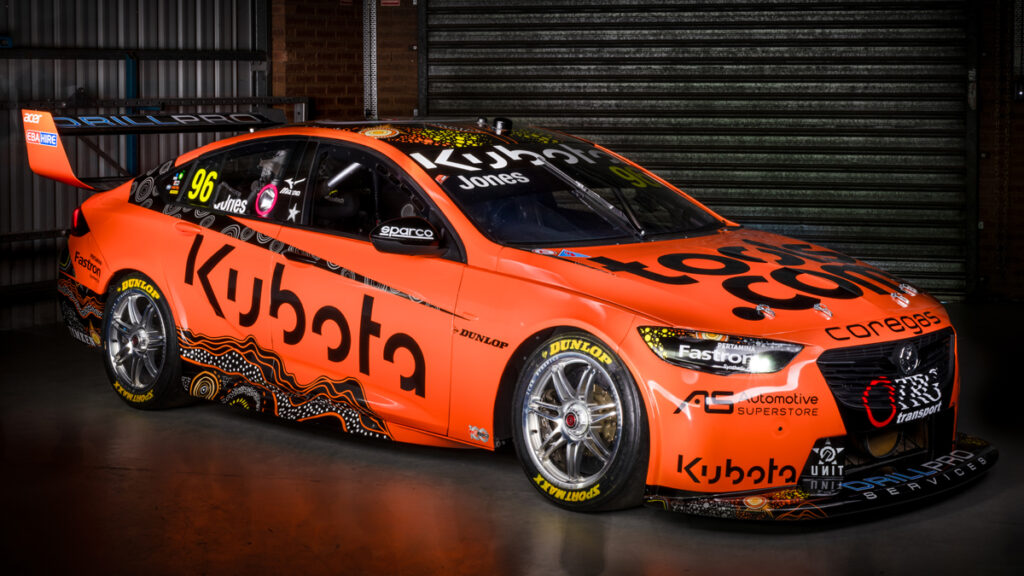
The artist says: Traditionally, fire has been used as a tool for managing country for countless generations.
The artwork on Macauley’s car is called Biri (Fire) Circles. Fire is an integral part of life. It allows the land to regenerate, germinate seeds and clears the undergrowth of the land.
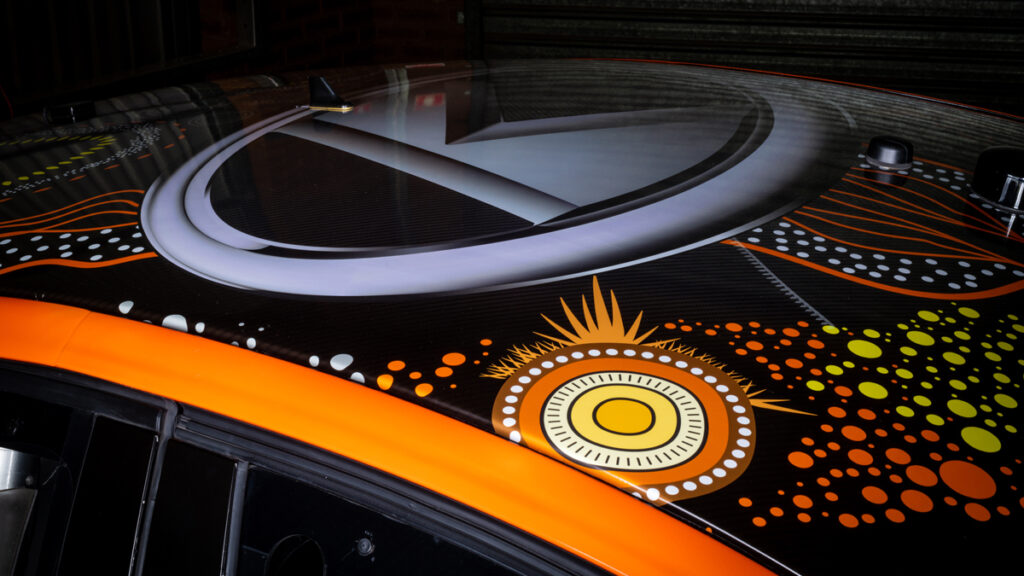
This makes way for new ground to grow and ensures wildlife have fresh food to feast on.
Biri can leave such devastation but is very much needed and symbolic in our own cycles of life.
Tickford Racing
Tickford Racing has released the following images of its Zak Best (wildcard) and Jake Kostecki-driven entries.
Its Cam Waters and James Courtney cars have arrived in Darwin with their regular Monster Energy and Snowy River Caravans colours respectively.
